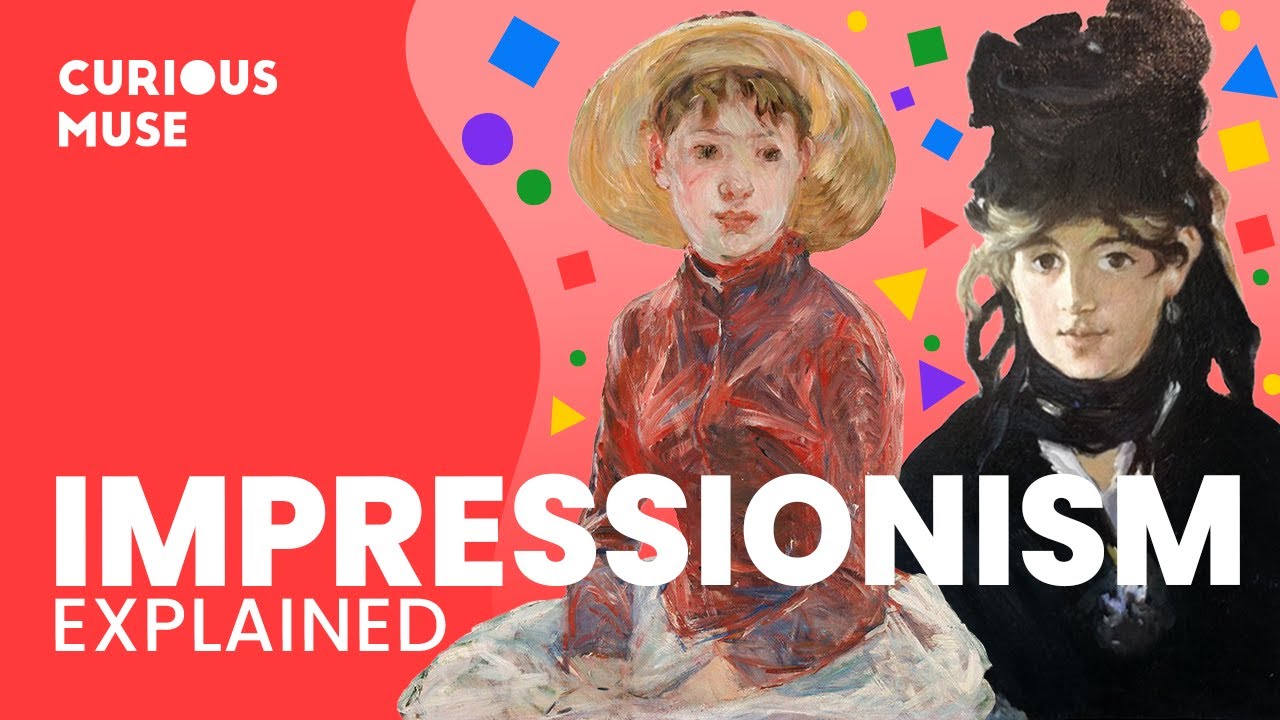Camille and Claude Monet
Summary
TLDRThis video explores the life and art of Claude Monet, focusing on his deep love for light and color, contrasted by the personal tragedies he endured. It delves into his relationship with his wife, Camille Doncieux, who was his muse and the subject of many of his paintings. The video highlights significant works, their emotional depth, and how Monet's art evolved alongside his personal hardships. Camille’s death had a profound impact on Monet, as seen in his expressive painting of her on her deathbed, blending his artistic obsession with his grief.
Takeaways
- 🎨 Claude Monet was known for his serene paintings, largely due to his obsession with light and color.
- 😠 Despite his beautiful art, Monet was not known for his pleasant personality and had few friends.
- 🤝 Monet was close to other artists like Frederic Bazille and Gustav Caillebotte, as depicted in 'Le Dejeuner sur l'herbe'.
- 🚤 Monet's fascination with light on water led him to convert a boat into a floating studio for unique perspectives.
- 🎨 Edward Manet painted a portrait of Monet in his studio boat, showing him at work.
- 💔 Monet's relationship with Camille Doncieux was marked by financial struggles and disapproval from his family.
- 👨👩👦 Monet and Camille had two sons, Jean and Michel, and their family life was often depicted in his paintings.
- 😢 Camille often appears in Monet's paintings, sometimes looking gloomy, reflecting the hardships they faced.
- 👘 In 'Camille in Japanese Costume,' a rare happy moment is captured, showing Camille smiling.
- 🌅 A portrait of Camille and Jean captures a serene moment, with Camille's presence magnified against a blue background.
- 😢 After Camille's death at the age of 32, Monet painted a deeply emotional and sad portrait of her on her deathbed.
Q & A
Who was Claude Monet, and what was he known for?
-Claude Monet was an artist known for his serene paintings, particularly due to his obsession with light and colors. He was a key figure in the Impressionist movement.
What was Monet's personality like?
-Monet was known to be rude and didn't have many friends, though he was close to other notable artists of his time.
What was Monet's 'Le Déjeuner sur l'herbe' a response to?
-Monet's 'Le Déjeuner sur l'herbe,' completed in 1868, was a response to Manet's 'Déjeuner sur l'herbe,' made five years earlier.
Who were the people depicted in 'Le Déjeuner sur l'herbe'?
-The painting includes the artist Frédéric Bazille, Gustave Courbet, and two women, with the woman on the ground being the main focus.
Why did Monet buy a boat and convert it into a studio?
-Monet bought a boat and converted it into a studio to get unique perspectives from which he could fully exploit the visual effects of light reflections on water.
Who was Camille Doncieux, and what was her relationship with Monet?
-Camille Doncieux was Monet's muse and eventual wife. She met Monet in 1865, and they had their first son, Jean, in 1867 before getting married in 1870.
What financial hardships did Monet face in his early life?
-Monet faced extreme poverty, often unable to afford painting supplies. His family, who were wealthy, refused to support him due to their disapproval of his relationship with Camille.
How did Camille's health affect her life and marriage to Monet?
-Camille had declining health, which worsened after the birth of her second son, Michel, in 1878. She died in 1879 at the age of 32, greatly impacting Monet.
What does Monet's painting of Camille on her deathbed signify?
-The painting 'Camille Monet on Her Deathbed' expresses sadness, grief, and possibly anger. It uses muted colors, which symbolize death, and represents Camille as if she is fading away, indicating her passing.
How did Monet's love for Camille influence his work?
-Monet often painted Camille, depicting her in various moments of their life together. Despite the struggles they faced, his paintings reflected both his obsession with light and color and his deep love for her.
Outlines

Этот раздел доступен только подписчикам платных тарифов. Пожалуйста, перейдите на платный тариф для доступа.
Перейти на платный тарифMindmap

Этот раздел доступен только подписчикам платных тарифов. Пожалуйста, перейдите на платный тариф для доступа.
Перейти на платный тарифKeywords

Этот раздел доступен только подписчикам платных тарифов. Пожалуйста, перейдите на платный тариф для доступа.
Перейти на платный тарифHighlights

Этот раздел доступен только подписчикам платных тарифов. Пожалуйста, перейдите на платный тариф для доступа.
Перейти на платный тарифTranscripts

Этот раздел доступен только подписчикам платных тарифов. Пожалуйста, перейдите на платный тариф для доступа.
Перейти на платный тарифПосмотреть больше похожих видео

ARTS 10 / IMPRESSIONISM: 20TH CENTURY ART MOVEMENT / QUARTER 1 / MODULE 2

Impressionism in 8 Minutes: How It Changed The Course of Art 🎨

O IMPRESSIONISMO DE MONET, MANET, RENOIR E DEGAS

IMPRESSIONISM Explained

Vlog#10 Start of Modern Art: Impressionism and Claude Monet

Brushstrokes (Part 2 of 3) - The 19th Century
5.0 / 5 (0 votes)
